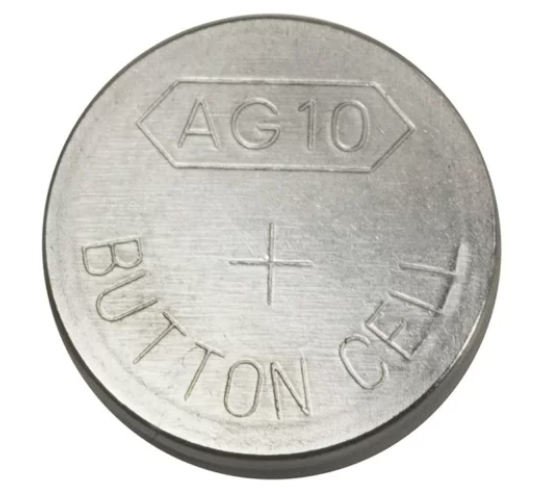Introduction

Batteries have become an integral part of our modern lives, serving as the power source for an ever-increasing number of devices and applications. From our smartphones to remote controls, medical devices to toys, batteries play a crucial role in keeping our world running. Among the numerous types and sizes of batteries available, the AG10 equivalent battery is a small yet important player in the realm of power sources. In this extensive exploration, we will delve into the world of AG10 equivalent batteries, uncovering their history, technology, applications, and the future they promise.
The Evolution of Batteries
1.1 Early Battery Development:
The history of batteries dates back centuries, with the earliest experiments conducted by luminaries like Alessandro Volta and Luigi Galvani in the late 18th century. These early batteries, such as the Voltaic Pile, laid the foundation for the development of modern battery technology. It was only a matter of time before batteries began to take various shapes and sizes to meet the diverse needs of consumers.
1.2 Birth of the AG10 Equivalent Battery:
The AG10 equivalent battery is a product of continuous innovation and evolution in battery technology. It falls under the category of button cell batteries, which are small, round, and typically silver in color. The AG10 equivalent battery is a direct descendant of the alkaline button cell battery family and is named after its standardized label. These batteries are approximately 11.6mm in diameter and 3.1mm in height, making them suitable for various small electronic devices.
AG10 Equivalent Battery Technology
2.1 Composition and Chemistry:
The AG10 equivalent battery employs a specific chemical composition that enables it to generate electrical energy efficiently. Typically, these batteries consist of a zinc anode, a manganese dioxide cathode, and an alkaline electrolyte. The chemical reactions between these components produce a flow of electrons, resulting in the release of electrical energy.
2.2 Alkaline Advantage:
Alkaline batteries, including the AG10 equivalent, are known for their reliability and longevity. The use of an alkaline electrolyte allows them to have a higher energy density compared to other battery types. This means that they can store more energy in a smaller space, making them ideal for compact and low-power devices.
2.3 Improved Shelf Life:
One of the key features of AG10 equivalent batteries is their impressive shelf life. These batteries can remain in storage for several years and still deliver a reliable performance when needed. This is due to the chemistry of the battery, which minimizes self-discharge and preserves its energy until use.
Applications of AG10 Equivalent Batteries
3.1 Consumer Electronics:
AG10 equivalent batteries are widely used in various consumer electronics. They can be found in products such as watches, calculators, digital thermometers, and remote controls. Their compact size and long-lasting power make them a popular choice for these everyday devices.
3.2 Medical Devices:
In the field of healthcare, AG10 equivalent batteries power an array of medical devices, including blood glucose monitors, hearing aids, and digital thermometers. Their reliability is crucial in these applications, as they often play a pivotal role in patients’ well-being.
3.3 Toys and Novelties:
The toy industry relies heavily on small button cell batteries like the AG10 equivalent. These batteries are commonly used in toys and novelty items, such as electronic greeting cards, keychain lights, and small electronic games.
3.4 Remote Controls:
Remote controls for various appliances and devices, from televisions to air conditioning units, depend on button cell batteries like the AG10 equivalent. Their compact size allows remote controls to remain slim and portable.
Environmental Impact and Sustainability
4.1 Recycling and Disposal:
Like all batteries, AG10 equivalent batteries have an environmental impact, primarily due to the materials they contain. Proper disposal and recycling of these batteries are crucial to mitigate this impact. Many regions have established recycling programs to ensure that button cell batteries are disposed of safely.
4.2 Transition to Rechargeable Batteries:
As environmental awareness grows, there is a shift towards using rechargeable batteries in devices where possible. Rechargeable batteries not only reduce waste but also offer long-term cost savings for consumers.
4.3 Industry Initiatives:
Battery manufacturers are also taking steps to improve the environmental footprint of their products. This includes investing in research and development to create more energy-efficient and eco-friendly battery technologies.
The Future of AG10 Equivalent Batteries
5.1 Technological Advancements:
Advancements in battery technology continue to shape the future of AG10 equivalent batteries. Research is ongoing to improve their energy density, lifespan, and eco-friendliness. As electronic devices become more compact and power-hungry, the demand for smaller, more powerful button cell batteries like the AG10 equivalent is expected to rise.
5.2 Integration into IoT:
The Internet of Things (IoT) is a growing field that relies on batteries to power a myriad of connected devices. AG10 equivalent batteries, with their compact size and reliable performance, are likely to play a significant role in this interconnected future.
5.3 Sustainable Practices:
Sustainability is a key consideration for the future of AG10 equivalent batteries. Manufacturers are exploring ways to make production more environmentally friendly, and consumers are becoming more conscious of recycling and responsible disposal practices.
Conclusion: The Power Within the AG10 Equivalent Battery
In a world where technology and devices are becoming ever more intertwined with our daily lives, the AG10 equivalent battery serves as a reliable and vital source of power. From its historical roots to its technological composition and its myriad applications, this unassuming button cell battery has made a significant impact on the way we live, work, and play. As we look to the future, it is clear that AG10 equivalent batteries will continue to evolve, adapt, and contribute to the power-hungry world of modern electronics while also addressing the pressing need for sustainability and environmental responsibility in the battery industry.
